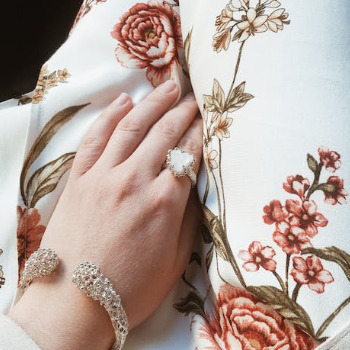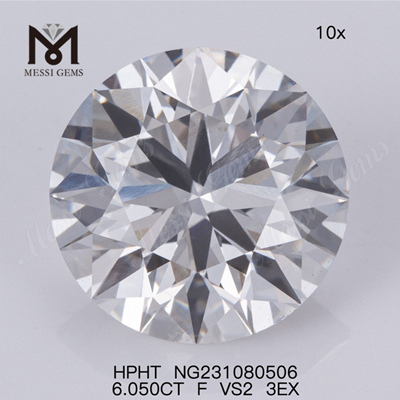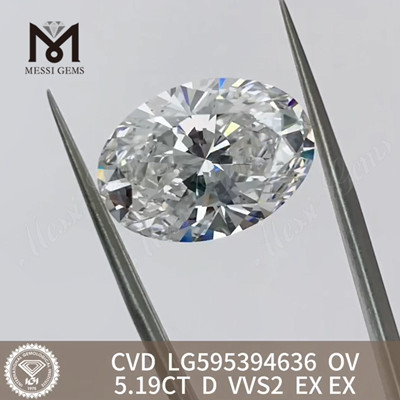
Since Lab grown diamond entered the market, they have faced criticism from some natural diamond industry players. In reality, there is no direct competition between natural and lab-grown diamonds.
Most people buy diamonds only on special occasions, such as engagements, as diamonds are often used as symbols of love. However, the significance of love is not determined by the cost or size of a diamond.
Many couples have strong relationships without diamonds, and a stainless steel cup in your home can also have lasting value.
The key is not how much you spend on a diamond but the love and commitment it represents. Therefore, the choice of diamonds is a personal one and should not be a source of judgment or competition.
Here are some key points to help you better understand Lab grown diamond:
Are Lab grown diamond "Fake Diamonds"?
Lab grown diamond are diamonds created by scientists in a laboratory setting. They have the same elemental, physical, chemical, and optical properties as natural diamonds. Therefore, they are not "fake" diamonds.
The crucial factor is whether the seller transparently discloses the diamond's origin. Just like when you order a specific type of fish at a restaurant, if you receive a different variety but are informed in advance, it is not deceptive.
Similarly, it's essential for sellers to clarify whether they are offering natural or Lab grown diamond to avoid confusion.
In July 2018, the U.S. Federal Trade Commission (FTC) updated its Jewelry Industry Guides, stating that Lab grown diamond and natural diamonds share the same optical, physical, and chemical properties, and both are considered diamonds.
The term "diamond" is no longer exclusively associated with naturally mined diamonds. With advancements in technology, scientists have been able to create diamonds in a laboratory setting. Therefore, when using the term "diamond," it now encompasses a broader definition.
Are Moissanite and Cubic Zirconia Diamonds?
Lab diamond go by various names,
Lab diamond = Lab grown diamond = Man made diamond = Synthetic diamond ≠ Moissanite diamond ≠ Cubic Zirconia
First four all refer to the same product—they are all diamonds. The distinction lies in the environment of their growth, which is in a laboratory rather than in nature.
In contrast, the last two, Moissanite and Cubic Zirconia, resemble diamonds in appearance but are fundamentally different materials; they are considered imitation or faux diamonds.
Natural Diamonds vs. Laboratory-Grown Diamonds: Both are crystalline structures composed of carbon elements.
They share identical optical, physical, and chemical properties, boasting a hardness of 10, a dispersion value of 0.044, a refractive index of 2.417, and a specific gravity of 3.52.
- Moissanite : It is a silicon carbide compound with a slightly blue or yellowish tinge. It has a hardness of 9.25 and exhibits a unique double refraction phenomenon, which sets it apart from diamonds.
- Cubic Zirconia: It is not a diamond but a synthetic crystalline form of zirconium dioxide (CZ). Cubic zirconia has a hardness of 8.5 and often contains undissolved zirconium dioxide powder and bubble-like inclusions. It is commonly used in affordable jewelry.
How to Identify Lab grown diamond:
The most reliable method to distinguish Lab grown diamond from natural ones involves the use of ultra-shortwave ultraviolet light to observe the diamond's growth patterns.
However, this equipment is typically only available at large gemological laboratories and may not be readily accessible to the average consumer or jewelry store due to the associated costs.
What is HPHT and CVD?
HPHT Diamonds:
High-Temperature High-Pressure Process: The preparation of HPHT diamonds involves exposing carbon materials to high-temperature, high-pressure conditions, simulating the natural diamond formation process. This process is used to improve the color and clarity of natural diamonds.
HPHT diamonds typically exhibit a similar appearance to natural diamonds but may sometimes show certain growth features, such as growth lines or inclusions, which can be used for identification.
HPHT diamonds have optical properties similar to natural diamonds, such as refractive index and spectral features, but can be analyzed using high-resolution spectroscopy instruments.

CVD Diamonds:
High-Purity Carbon Deposition: CVD diamonds are prepared by depositing high-purity carbon gas onto a substrate to grow diamond crystals, typically under low-pressure conditions.
CVD diamonds may have slight differences in appearance, occasionally displaying growth layers or uneven color. These features can be used to differentiate them from natural diamonds.
CVD diamonds typically possess different optical properties compared to natural diamonds, such as distinct fluorescence behavior and transmission spectroscopic characteristics, which can be used for identification.

Does Having a GIA Certificate Mean It's a Natural Diamond?
No, having a Gemological Institute of America (GIA) certificate does not guarantee that a diamond is natural. Most certification organizations assess both natural and Lab grown diamond.
For instance, the GIA introduced LGDR, a new certification for Lab grown diamond in late 2020. This certificate provides detailed information about the diamond, and its 4C grading system is the same for natural and Lab grown diamond.
Do Lab grown diamond Retain Their Value?
Similar to small natural diamonds, Lab grown diamond do not necessarily appreciate in value. Larger natural diamonds may have a relatively higher chance of retaining their value, but they are usually purchased by wealthier individuals who may not be primarily concerned with investment.
For most consumers, the primary motivation for buying diamonds is their aesthetic appeal rather than investment potential. If your primary concern is preserving value, alternative investments like gold may be more suitable.
Are Lab grown diamond Really Environmentally Friendly and Ethical?
Lab grown diamond are unquestionably not blood diamonds, and they are generally considered more environmentally friendly than their natural counterparts.
Various reports and studies have compared the environmental impacts of natural and laboratory-grown diamond production, with some suggesting that large-scale natural diamond mining has a more significant negative impact on the environment.
Many laboratory-grown diamond producers are working to improve their production processes to minimize their environmental footprint.
Are Lab grown diamond Perfect?
No, Lab grown diamond are not perfect. The growth process, especially for HPHT diamonds, involves uncertainty. When an HPHT diamond is harvested, it's like a lottery; you might get a beautiful stone if you're lucky, but other times, you might receive a rough diamond full of inclusions that is not worth cutting.
In the current production technology for HPHT diamonds, only a small percentage of stones achieve VS clarity. Alternatively, you could cut the rough into smaller diamonds and obtain some with VS clarity.
Ultimately, the choice between natural and Lab grown diamond is a personal one, driven by individual values, preferences, and budget.
Regardless of the choice, the most important factor in a relationship is the love, commitment, and communication between two people.
The presence or absence of a diamond does not define the quality of a relationship or the significance of the love it represents.












